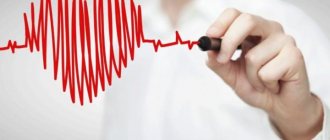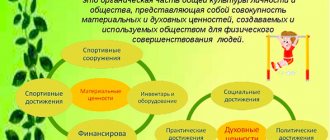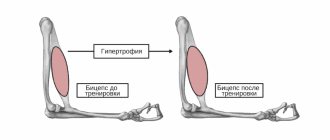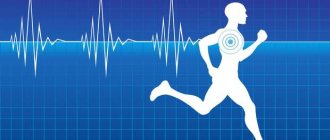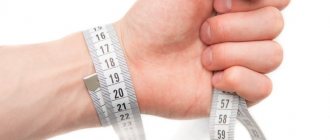By the frequency, rhythm and strength of oscillatory blood beats, one can judge a person’s physical health as a whole, record dangerous cardiac disorders, and determine the effectiveness of sports training. Changes in heart rate are symptoms of many life-threatening conditions and diseases, so it is important to know physiological norms. They are different for people of different ages.
Why is the pulse called arterial?
The arterial bed receives the entire volume of blood that is pushed out by the heart chamber at the time of contraction. The periods of systole - an increase in pressure as blood comes out - are accompanied by rhythmic beats. The subsequent stages of relaxation of the myocardium for new filling with blood - diastole, make it possible to determine the frequency and strength of these impulses. The oscillations made by the arterial walls are called the pulse. Damage to these vessels, especially large ones, is the most dangerous, as they are accompanied by massive rapid bleeding.
The stronger the pulse beats, the greater the blood flow through the arteries, the more active the oxygen supply to internal organs and overall metabolism. The main “impact” force is provided by the walls of the left ventricle of the myocardium. The following pulse characteristics are important:
- frequency;
- rhythm;
- speed;
- voltage.
Violation of one or more points indicates acute or chronic pathology. Changes in pulse intervals, for example, are a sign of cardiac arrhythmia. An increase or decrease in speed indicates hypertension or a hypotonic state.
Which workouts are good and which are bad for your heart?
The most popular way to develop cardiac endurance and strengthen the cardiovascular system is cardio training. These include running, cycling, walking, jumping, swimming and other activities that do not require much muscle strength. Such exercises do not contribute to a sharp increase in muscle mass, and the load on the heart increases gradually. Cardio training helps the heart simultaneously increase the number of myocytes and, in proportion to its mass, fully fill with blood in diastole. Thus, the volume of the heart increases, and it can pump more blood per unit of time, having time to get enough rest.
In turn, strength training stimulates an increase in the volume of skeletal muscles, which need to be supplied with more oxygen. An already trained heart can handle such a load.
In fact, both strength training and cardio training can be used to strengthen your cardiovascular system. Often in physically weak people, those who have heart problems, or a high degree of obesity, cardio training can cause a sharp increase in heart rate and blood pressure. In this case, strength training can be used with minimal weighting at a comfortable rhythm. At the same time, the increase in load will not be sharp, and the heart will have time to adapt to the new needs of the body. The main attention should be paid to the intensity of the growth of weights and a sufficient amount of rest.
How to measure your pulse correctly
Wave-like fluctuations in the blood are clearly noticeable when touching certain parts of the body. Those under the skin of which large arterial vessels are located. To measure the frequency and assess the rhythm of the pulse, you should apply your fingers: fixing them at one point quite tightly, but without strong pressure. Areas to check for pulsation:
- carotid artery: a point on the front surface of the neck, on the right, under the jaw;
- radial artery: on the inside of the wrist of the left or right hand;
- temporal artery: on the side of the left or right temples;
- brachial artery: on the inner surface of the elbow;
- popliteal: in the area of the popliteal folds of the legs;
- femoral: at the junction of the pelvis and lower limbs.
The measurement accuracy is the same for all methods. The most popular methods remain recording the pulse on the wrist or neck. To calculate its frequency, it is important to use a stopwatch or electronic timer. Applicable time interval: 1 minute. It is necessary to measure at rest, preferably before eating: for example, after waking up or during a period of rest.
The rhythm and force of the beats cannot be assessed without the use of special instruments. But with the manual method, sudden changes in the nature of the pulsation are noticeable. Normally, it is measured, at equal intervals, without acceleration or fading. If the blood impulses are poorly palpable, too weak or uneven, this is an unfavorable sign. You should undergo a detailed diagnosis.
Why does the heart need help when playing sports?
When determining the permissible load based on heart rate, only the gender and age of a person are usually taken into account, without taking into account the individual characteristics of the body. If, for example, you have never trained seriously, then loads, even at an acceptable heart rate, can cause oxygen starvation in the myocardium.
It will not be difficult to increase your heart rate to the maximum, but staying at this figure for 40 minutes (the recommended duration of cardio training) will not be possible immediately. The heart will beat faster, but the circulatory efficiency will be low. Fatigue and shortness of breath are signals of ineffective blood circulation. In this case, training through force is dangerous, since you can cause irreparable damage to the heart muscle.
But even if you are sufficiently trained and not tired, you cannot be completely sure that the heart is receiving enough oxygen. For example, with a heart rate above 160, you can feel quite normal, but your heart will suffer and be damaged.
With regular training, cardiologists recommend taking medications that improve metabolic processes in the myocardium, thus preventing heart failure. The optimal drug for this is Eltacin® , which consists of structural components natural to the body and is safe for long-term use.
The basis of Eltacin® is amino acids. They improve the absorption of oxygen by the myocardium and protect the heart even under high loads.
What heart rate is considered normal?
The current general standard for beats per minute readings for healthy people is 60–80. These are numbers for determining your resting heart rate. As a rule, they correspond to the heart rate. Many doctors find it necessary to expand this range by adding 10 units to the extreme values. That is, define as the norm indicators from 50 to 90 beats per minute. This scatter is explained by physiological differences between people and the characteristics of the heart and blood vessels in different age groups. In addition, normal heart rate depends on lifestyle. For athletes and simply physically active people, it is slightly higher than for habitually calm people. Women's indicators also differ upward.
The pulse rate invariably increases during physical activity, acute stress, and nervous tension. This is a normal reaction of the body. When activity and exposure to external factors decrease, the heart gradually normalizes contractions. For healthy people, the period of return to normal heart rate is no more than 10 minutes. In the presence of pathologies, especially endocrine or cardiovascular ones, increased pulsation persists longer. Unreasonable disturbances in a state of rest should cause severe anxiety. The periodic appearance of bradycardia, tachycardia and other disorders may be the primary sign of ischemia, hypoxia, intoxication and other dangerous conditions.
In pregnant women, the pulse rate is closer to the upper limit: 80–90 beats. This is explained by the pressure of the growing uterus on the diaphragm and changes in hormonal levels. Overweight people also experience increased heart rate. And obesity often provokes the development of tachycardia due to the high load of body weight on the blood vessels and heart.
Children have different heart rates than adults. In infants, it reaches 140 beats per minute, gradually decreasing as the body develops. By the age of 6, the heart of preschoolers beats with a force of 100 beats, and by approximately 16 years it reaches the level of adults.
General heart rate norms by age:
- first month of life: 110–140;
- up to 1 year: 100–130;
- up to 2 years: 95–120;
- in children 3–8 years old: 93–110;
- from 9 to 12 years: 65–100;
- from 13 to 16 years: 60–95;
- from 17 to 20 years: 60–90;
- from 21 to 40 years: 60–90;
- from 40 years old: 60–85.
The given indicators are reliable for a state of rest. In women and men, the average heart rate differs slightly. They are more influenced by the individual characteristics and lifestyle of people.
Matters of the Heart - Exercise
So what should beginners do? First, you need to undergo a medical examination, during which a sports medicine doctor will determine your state of health and the level of possible stress, and only then proceed to training. The first to react to the load are the vessels, which carry out the mission of delivering nutrients to the tissues and evacuating substances used for muscle activity, and the heart - so that it has time to provide this process with the appropriate dynamics.
Training will be useful if:
- for a positive effect from training, each session should last at least 40 minutes;
- the interval between unidirectional training will be about 48 hours - during this time the body will have time to recover;
- training will be useful if you use multidirectional loads (cardio training and strength training);
- the effort applied must correspond to the level of training.
Types of Cardio Training
The most common cardio workouts that can be practiced even outside the gym are:
- walking;
- run;
- jumping rope;
- skis;
- swimming.
In fitness centers, such loads include exercises on certain types of exercise equipment (steppers, ellipses, bicycles and others), aerobics, dancing, circuit and interval intensive exercises, team sports (tennis, football and volleyball).
Walking
A natural type of activity for everyone, suitable for people with heart disease and obesity. Walking is also recommended when exercising during the rehabilitation period after injuries. In addition, this is a good solution for beginners in sports and those who cannot find time for training. Unlike running, movements do not put a lot of stress on the body, in particular on the joints, spine and muscles.
It is advisable to practice walking daily, alternating fast steps with regular ones. They should be frequent and short, since wide movements of the legs can cause pain in the hips and feet. When walking uphill, your exercise efficiency increases, which helps you burn more calories. Nordic walking and movements on an inclined treadmill show excellent results in health improvement.
So, in order to get the same calorie expenditure when replacing running with walking, you need to spend approximately 2 times more time. For example, 40 minutes of cross-country is equivalent to 80 minutes of walking at an accelerated pace (150 steps/min).
Run
Jogging is an effective and simple cardio workout that will boost your energy and burn a lot of calories. Moreover, such activity is equally useful both on the street and in the gym, and the intensity will depend on the state of health. Contraindications for running include knee problems and excess weight.
Long-lasting and quick results will be achieved by running at medium speed for 1 hour, 3-5 times a week. Beginners are advised to start with 10 minutes a day, adding 120-180 extra seconds each session. You can train for 20 minutes, but in this case you need to take walking breaks. In addition, while jogging, it is important to monitor your breathing and pulse. If your health is not ideal, then before starting exercise it is better to consult a doctor so that he can select the intensity of movements.
Swimming
In just an hour of swimming in the pool you can burn 600 kcal. This type of cardio does not load the spine and joints, but uses a large number of muscles at a fairly moderate intensity. Continuous movement in water increases the volume of the lungs, which improves the supply of oxygen to the body and increases blood circulation. In addition, swimming does not release the same amount of lactic acid as training on land.
Successful burning of fat and pumping muscles will be ensured by attending water classes regularly 3-4 times a week. During training, you should combine the use of different styles and movement in the pool at a fast pace. The processes will become even more effective if you practice under the guidance of an experienced trainer. Instructors at the La Salute fitness club prepare an individual cardio program for each client, adjusting the load to lead even a beginner to an ideal result.
Bike
The advantage of cycling is that there is no shock load on the joints and bones. Cardio training burns about 550 kcal per hour, “dries out” the leg muscles and is suitable for both beginners and more advanced athletes. The result is ensured by riding 3 times a week for 30 minutes. Moreover, exercising on an exercise bike in the gym is not inferior to pedaling on the street in terms of load efficiency.
Exercise equipment
Working on such equipment simulates running, walking, rowing, cycling and other types of training. The movements pump up almost all muscle groups and, if desired, provide high intensity, but at the same time put minimal stress on the joints. In addition, the exercise machines can always be programmed to control your stay in the cardio zone. Also, when exercising in the gym, it is easier to exercise under the supervision of a trainer.
Aerobics
A mix of elements accompanied by energetic music not only strengthens your overall physical condition, but also increases joint mobility, forms a muscle corset, and helps you lose weight. Exercise increases lung capacity and saturates tissues with oxygen. In addition, aerobic exercise calms the nervous system, counteracts stress and improves sleep.
The expected effectiveness is achieved only through regular exercise with a sufficient number of repetitions, performed at low or medium intensity. It is better to start with light training and increase the load gradually (by 10% per week).
Any combination of cardio activity or doing different types of exercise every other day is acceptable. This will pump up all muscle groups and make the body as developed as possible.
Cardio exercises for home workouts
For training, you can always find a suitable video on the Internet. Moreover, there is no fundamental difference in training programs for men and women. Unless the stronger sex can do more approaches, and beginners can choose simple exercises. The main thing is to maintain your heart rate when performing tasks, and do a warm-up before starting cardio.
As an example, a complex for beginners is given. Exercises will raise your heart rate, increase your metabolism and start fat burning processes. In the future, you can diversify the activity by jumping and running in place.
| 1. | Swing with legs bent at the knees and pulled towards the chest. Place your feet shoulder-width apart and raise your arms straight up. At the same time, pull your knee to your chest and lower your arms bent at the elbows along the body. Repeat alternately, changing limbs. |
| 2. | Tilts diagonally towards the foot. Place your feet together, raise your arms straight above your head. Take a wide step to the right and at the same time touch your right foot with your left hand. Straighten up and repeat the bend on the other leg. |
| 3. | Plank steps. Take a plank position with your arms straight, resting on your feet and palms. Keep your lower back straight. Alternately pull your legs bent at the knees in your chest, imitating steps. |
| 4. | Taking the leg to the side in a half squat. While standing, bend your legs slightly. First, do an approach in one direction, vigorously moving your leg to the side and returning it to its place. After a series of such movements, change your leg and repeat everything. In this case, your hands should help, simulating jogging. |
| 5. | Boxing. Take a stance with your feet wider than shoulder-width apart. Place your arms bent at the elbows in the chest area, pressing them to the sides of the body. Clenching your palms into a fist, make alternate movements forward, imitating punches in boxing. |
| 6. | Swings with the knee pulled to the chest. Stretch your arms in front of you. Place one leg back and squat slightly on the other. Swing to the chest with the abducted limb, bending it at the knee. Help the movements with your hands. Do it first on one side and then on the other. |
| 7. | Swing forward with straight legs. Feet in a straight stance, shoulder-width apart, arms at your sides along the waist. Swing your legs straight in front of you, while simultaneously reaching your toes with the palm of your opposite hand. |
| 8. | Knee-elbow swings . Standing in a straight position, join your arms above your head. Swing to your chest with your leg bent at the knee, and at the same time lower your arms, touching your knee with the opposite elbow. Repeat alternately on different sides. |
| 9. | Back lunges with arm raises. Standing position, legs together, arms at your sides along the body. Lunge with one leg back, placing it on your toes, and raise your arms straight up. Return to the starting position and repeat on the other leg. Do it alternately 10-15 times at an intense pace. |
Contraindications
Despite the fact that cardio training is beneficial for a large number of people, it should be said that it is harmful for some categories. For example, exercise is not recommended for infectious and oncological diseases, diabetes and severe cardiac disorders.
Also, the possibility of performing exercises with caution is discussed in case of obesity, asthma, joint diseases, intervertebral hernias in the post-infarction state. The presence of the listed diagnoses requires mandatory consultation with a doctor, who will consider the advisability of such activities and potential benefits for the body.
It is strictly forbidden to train if you have the following problems:
- respiratory diseases;
- allergic manifestations in acute form;
- ulcers in the gastrointestinal tract;
- chronic processes in the acute stage.
Pulse zone
Pulse is the rate at which the heart beats over one minute. There is also the concept of a pulse zone, which determines the range from the heart rate at rest to the maximum load on the body.
In everyday life, a person does not need to monitor his pulse zone. But for athletes this parameter is very important. The fact is that when the heart rate is in only one zone, it promotes weight loss; at high values, the endurance of the human body increases
Help: Each person has his own pulse zone, which is determined using laboratory tests.


